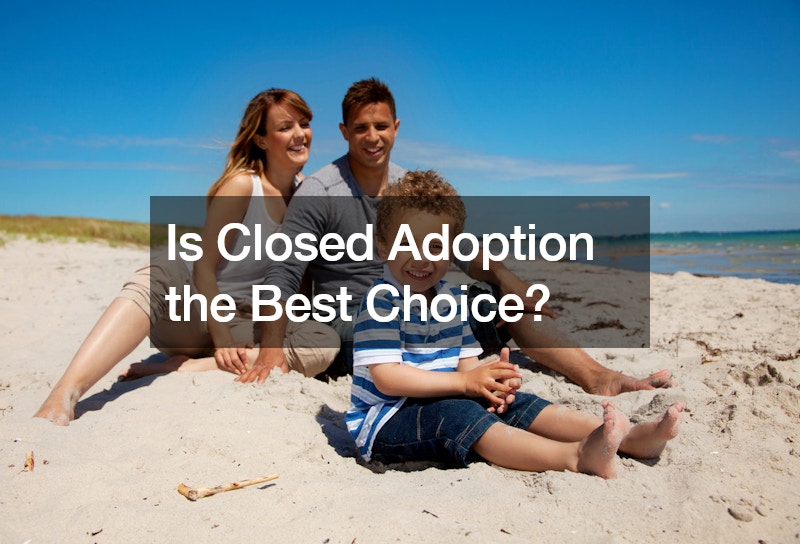
In the realm of adoption, the choice between open and closed adoptions is a pivotal decision that prospective parents often grapple with. This article delves into the complexities surrounding closed adoptions and explores the factors that contribute to its consideration. While closed adoption may seem like a conventional choice initially, understanding the nuances and potential drawbacks is essential for making an informed decision.
The Initial Lean Towards Closed Adoption
Many individuals embarking on the adoption journey find themselves initially inclined towards closed adoptions. The desire to replicate a “normal” family-building experience often steers couples in this direction.
The idea of receiving a child and moving forward without delving into the intricacies of the birth family’s history can appear simpler and less emotionally challenging.
The Fears Associated with Closed Adoption
Fear plays a significant role in steering prospective adoptive parents away from open adoption. The complexity of adding another individual to the family, especially one with ties to the child’s biological roots, can be overwhelming. One prevalent concern revolves around the fear of the biological parent becoming more important than the adoptive parent. The anxiety of potential competition for affection, attention, or even the child’s ultimate choice in the future adds to the apprehensions surrounding closed adoptions.
Evolving Perspectives through Research
One key aspect that often leads to a shift in perspective is research. Understanding the long-term emotional health of adoptive children becomes a crucial factor. Research reveals that, particularly in the crucial years of identity formation, open adoption can offer significant advantages. Adoptive children with access to information about their biological roots tend to fare better emotionally, avoiding the sense of a “black hole” in their identity.
Overcoming the Stigma of Closed Adoption
As prospective adoptive parents delve deeper into the world of adoption, the stigma associated with closed adoption begins to dissipate. While the initial allure may stem from a desire for simplicity, education becomes a powerful tool in dismantling preconceived notions. Adoptive parents learn that closed adoption may not shield them from potential challenges but rather exacerbate the difficulties faced by adoptive children in forming their identity.
Adapting to Openness
The journey from initially preferring closed adoption to embracing openness is a transformative process. It involves overcoming fears, adapting to new perspectives, and staying open to the needs and desires of the birth parents. The host of an adoption journey emphasizes the importance of being adaptable, providing whatever the birth mother asks for – whether it be photos, videos, or regular updates.
The Emotional Rewards of Open Adoption
Open adoption, despite its challenges, brings about emotional rewards for all parties involved. The joy experienced by birth parents in witnessing the growth and happiness of their child, coupled with the fulfillment adoptive parents derive from the shared experience, forms a symbiotic relationship. It goes beyond mere legalities, fostering a connection that enriches the lives of everyone involved.
Closed Adoption: A Veil of Privacy
In closed adoptions, adoptive and birth families maintain limited to no contact, ensuring privacy and anonymity for both parties. Initially appealing to some due to its semblance of a traditional family-building experience, closed adoptions involve keeping the birth parents’ identity confidential. This approach may alleviate fears of potential complexities arising from an additional family member, concerns about the birth parent becoming more significant, or apprehensions about the adoptive child seeking out their biological roots.
However, the veil of privacy in closed adoptions has its drawbacks. The adoptive child may grapple with a lack of information about their origins, impacting their sense of identity and belonging. Additionally, adoptive parents might face challenges in addressing the child’s curiosity about their birth family, potentially leading to uncharted emotional territory.
Conclusion: Navigating the Complexities of Adoption
In conclusion, the choice between closed and open adoption is deeply personal and multifaceted. While closed adoptions may seem like a straightforward option initially, delving into the complexities reveals the potential drawbacks and challenges it poses. The journey from initial fears to an embrace of openness is marked by education, adaptability, and a commitment to the child’s well-being. It’s important to consider each adoption process and how you want to go through the process. Understanding the different processes is the best start to introducing a new member of the family.
Prospective adoptive parents are encouraged to explore the spectrum of open adoption, recognizing its diverse forms and understanding that it is not a one-size-fits-all concept. The narrative of adoption is one of complexity, beauty, and continuous growth. By staying rooted in reality, adopting positive language, and remaining committed to education, adoptive families can navigate the intricacies of the adoption journey with compassion and resilience.
.





